Linux Chmod Directory Only
Group members and other users can read and execute, but cannot write.
Linux chmod directory only. Read (`r'), write (`w'), and execute (`x'). Chmod -R u=rwX,go=rX /path/to/htdocs The only potential problem is that if any of the plain files already have execute set, chmod assumes it's intentional and keeps it. Chmod will only have one effect, if you remove all the write attributes of a file then the 'read only' attribute on the Windows file will be set, since this is the same behaviour as CIFS (Common Internet File System) which is the SMB (Server Message Block) client in Linux.
Write and execute :. If you ever need to say it out loud, just pronounce it exactly as it looks:. PATH chmod read & write read read FileName.
Apply chmod 644 to all files only (excluding directory). Chmod permission file_name There are two ways to define permission:. Is there an easy way out to achieve this on a Linux or Unix-like systems?.
Chmod command in UNIX or Linux is used to change file or directory permissions.This is one of many UNIX basic commands which a UNIX or Linux user must be familiar with. To assign all the permissions as in your example, use:. Following is a sample of ls -l command output.
In this UNIX command tutorial we will see how to change file permissions using the chmod command, what are file permissions in UNIX, how to change permissions of directory and sub-directory using UNIX chmod command and finally. Set permission in Linux using chmod:. This can be achieved by changing file permissions.
How can I use, preferably a single chmod command, which will allow any user to create a file in a directory but only the owner of their file (the user who created it) can delete their own file but no one else's in that directory. How to Set File Permissions Using `chmod' Files and directories in Unix may have three types of permissions:. H ow do I set a read-only permission for all of my files stored in /var/www/html/ directory?.
This page explains how to setup read only file permission on Linux or Unix web server such as Nginx, Lighttpd, Apache and more. Simply enter this line:. Recursively (-R) Change the permissions of the directory myfiles, and all folders and files it contains, to mode 755:.
In Linux, access to the files is managed through the file permissions, attributes, and ownership. This ensures that only authorized users and processes can access files and directories. Linux - Solution 7:.
If you need to change a file permission, use the chmod command. Operate on directories only:. There may also a concern about security that permissions specify what a particular user may or may not do changes to a particular file and directory.
Now if we use chmod, it does not allow to modify root permission # chmod -c --recursive 755 / chmod:. Root@host ~# chmod u+x myfile root@host ~# ls -l total 0 -rwsrw-r-- 1 test test 0 Mar 2. To change directory permissions for everyone, use “u” for users, “g” for group, “o” for others, and “ugo” or “a” (for all).
In Unix and Unix-like operating systems, chmod is the command and system call which is used to change the access permissions of file system objects (files and directories). Owner and Groups can Read#. The basic syntax is:.
Chmod a=r document.docx 5.2. Chmod 1755 participants With a sticky bit, only the file owner, the directory owner, or the root superuser can delete the file, regardless of the file's read-and-write group permissions. With the concepts mentioned in this article, you are equipped with sufficient knowledge to handle permissions in Linux-based distros.
Chmod 755 -R /opt/lampp/htdocs will recursively set the permissions. To put it simply, use chmod command to change the file or directory permissions. The command executed here is chmod 777 -R home and it gives 777 permission to the folder home itself, also to all of the files and sub-directories inside this folder.
On Linux, the sticky bit only affects a directory—setting it on a file wouldn’t make sense. Chmod 744 file name By executing this command, the owner can read, write, and execute the file (rwx). The command that executes such tasks is the chmod command.
They can’t delete files that belong to someone else, no matter which combination of file permissions are set on the files. Use --no-preserve-root to override this failsafe Linux Permissions Syntax. When you set the sticky bit on a directory, people can only delete files that belong to them within that directory.
# alias chmod='chmod --preserve-root' and also add this to your /etc/bashrc or individual user's .bashrc file for permanent changes. How does chmod work?. Type chmod 777 * to change mode for all files in that directory.
The chmod command in Linux is used to change file and directory permissions using either text (symbolic) or numeric (octal) notation. In this article, I’ll share with you some of the practical examples of chmod command. Second rwx refers to the group permissions.
Chmod options MODE FileName File Permission # File Permission:. The format of the command is chmod XXX -R directory-location. -type f -exec chmod 660 {} \;.
Chmod -R +X. Change directory with cd directory. In Linux, files and directories are treated similarly.
Group can read only;. Others can read only". It is dangerous to operate recursively on '/' chmod:.
$ chmod OPTIONS MODE filename Only the root user or a regular user with sudo privileges can change file or directory permissions. Let's say that I wanted to change the permissions on the current directory and all subdirectories. The name is an abbreviation of change mode.
It is also used to change special mode flags. This output looks a little different from what we were expecting. Chmod -R u=rwX,g=rX,o=.
Chmod will change or add metadata depending on. To change file access permissions you need to use the chmod command. There's no way to set the permissions for files automatically in only this directory that are created after you set the permissions, but you could change your system-wide default file permissions with by setting umask 022.
A widely used, often shorter, form of calling chmod is by use of the octal notation. File Permission is given for users,group and others as, SYNTAX :. Change directory with cd directory.
Introduction Multi-user systems, such as Linux, require setting up and managing file permissions that ensure only authorized users have access to files they are supposed to. To give execution (search) permission to directories, but not to files, use:. If you only want to change mode for a special type of file your can use chmod 777 *.txt *.dat orchmod 777 filename.ext.
Linux - Newbie This Linux forum is for members that are new to Linux. Just starting out and have a question?. So, you can use:.
Alot of them are nested, so I can't just chmod the directory and then set the files back to what they were before. -rwx------ root root , meaning that root can read, write and. Change into the directory with cd, before you run the find command.
Chmod only directories User Name:. There are three types of permissions that Linux allows for each file. I have a number of files in this directory and I need to change permission from 0777 to only if that file has 777 permissions.
The X symbolic permission means "execute, if it makes sense" which generally means on directories but not files. Say you do not want your colleague to see your personal images. Find ./mydir -type d -exec chmod 755 {} \;.
This is a combination of three numbers by which we can represent all. Type chmod 777 * to change mode for all files in that directory. Chmod go=rx myfile - Remove read and execute permissions for the group and other.
Sudo chown root:root /path/to/application sudo chmod 700 /path/to/application If you look now at permissions with ls -l /path/to/application , you should see the following:. This means the user can only:. We can use the 'chmod' command which stands for 'change mode'.
This option change files and directories permissions recursively. This is done with the chmod command. Operate on files only:.
In Linux, you may face permission problems while installing software packages, exploring directories, reading/writing files. Chmod 755 $ (find /path/to/base/dir -type d) chmod 644 $ (find /path/to/base/dir -type f). Chmod a=r foldername to give only read permission for everyone.
Chmod is a great Linux command for manipulating file and directory permissions. Make sure that the owner of the application is root and set the permissions such that only the owner can run it. You can use the chmod command to set read-only permission for all files on a Linux / Unix / macOS / Apple OS X / *BSD operating systems.
Chmod can actually do this itself;. First rwx refers to the user permissions. User can read, write, and execute;.
So, in laymen terms, if you wanted a file to be readable by everyone, and writable by only you, you would write the chmod command with the following structure. The request is filtered by the umask. One set for the owner of the file, another set for the members of the file’s group, and a final set for everyone else.
I’ll also explain some the popular terms like chmod 777 or chmod 755 or chmod -r. Chmod -R 755 myfiles. Apply chmod 755 to directory and sub-directories only (excluding files).
It has -R or –recursive option that change files and directories. Using symbols (alphanumerical characters) using the octal notation method. Chmod 755 directory As the user can create a file and delete it, but won't that allow the user to delete other people's files?.
About Sergey Tkachenko Sergey Tkachenko is a software developer from Russia who started Winaero back in 11. One of the easiest ways is to use the find command to select the files and then run the chmod command with the -exec switch. Examples chmod 644 file.htm.
As all Linux users, you will at some point need to modify the permission settings of a file/directory. I was thinking to use:. The file or directory owner;.
Chmod file has metadata. This tutorial covers how to use the chmod command to change the access permissions of files and directories. Read write execute Putting it all together:.
The Linux command chmod allows you to control exactly who is able to read, edit, or run your files. Myfile.txt – the name of the file/folder. When using find with -exec, the chmod command is run for each found entry.
These permissions apply only on the owner of the file and directory. How to make a file writeable (chmod 777) Connect to your web server with your telnet software. How to Change Groups of Files and Directories in Linux.
There are three sets of permissions. Other people in the same group as the owner;. For example, to set the sticky bit, prefix a 1 to the number sequence:.
Chmod command allows you to alter / Change access rights to files and directories. There's no way to set the permissions for files automatically in only this directory that are created after you set the permissions, but you could change your system-wide default file permissions with by setting umask 022. If it is not in the man pages or the how-to's this is the place!.
Chmod -R rwxrwxrwx path-of-the-directory. If you only want to change mode for a special type of file your can use chmod 777 *.txt *.dat orchmod 777 filename.ext. However, group and others are only allowed to read (r–).
Let’s say we want to change Linux file permissions from -rwxrw-rw-to -rwx-r–r–. This entry was posted in Linux and tagged chmod for files only, chmod for folders only, chmod separately for files and directories on July 10, 16 by Sergey Tkachenko. The find command searches for files or directories under /var/www/html and passes each found file or directory to the chmod command to set the permissions.
Changing file/directory permissions with 'chmod' command. To use chmod, you need to know about access modes.Each file on a Linux system has nine access modes (or settings) that determine exactly who can. The following screenshot shows the execution of the command on a Linux Environment.
How to Use chmod Command. Chmod ugo+rwx foldername to give read, write, and execute to everyone. Chmod +s myfile - Set the setuid bit.
How to chmod files only on Linux There are several ways to apply a chmod to files recursively on Linux. Linux File Permissions #. Chmod directories only I have a lot of directories that I want to chmod, but only the directories, not the files.
In this, the 9 characters from 2nd to 10th position represents the permissions for the 3 types of users. Chmod is an abbreviation for change mode;. Set the permissions of file.htm to "owner can read and write;.
For example, we can make our document read-only for every user and group with:. Each permission may be `on' or `off' for each of three categories of users:. Chmod for changing on Subdirectories# chmod on subdirectories or Files:.
-type d -exec chmod 770 {} \;. The man page for chmod doesn't list a way to recursively change permissions on directories only, without affecting the files themselves. We can add that permission using the ‘chmod u+x’ command.
Use chmod to set additional file system modes for files and directories. Chmod Modifies File Permissions In Linux, who can do what to a file or directory is controlled through sets of permissions. Sooner or later in the Linux world, you will have to change the permission on a file or directory.
It takes the following syntax:. Using the command, we can set permissions (read, write, execute. The lowercase ‘s’ we were looking for is the now a capital ‘S.’This signifies that the setuid IS set, but the user that owns the file does not have execute permissions.
The basic syntax of the chmod command is shown below:. How to make a file writeable (chmod 777) Connect to your web server with your telnet software. Use the xargs command to speed up the operation by passing multiple entries at once:.
-R changes files and directories recursively, while +X sets execute/search only if the file is a directory or already has execute permission for some user.

How To Change Permissions Chmod Of A File Hostgator Support

Modify File Permissions With Chmod Linode

Chmod 777 In Terminal The Command To Make All Changes Affect Every File And Folder Ask Ubuntu
Linux Chmod Directory Only のギャラリー

Linux Permissions An Introduction To Chmod Enable Sysadmin

Chmod Command In Linux With Examples Geeksforgeeks

How To Use The Chmod Command On Linux

Chmod 777 A Definitive Guide To File Permissions
:max_bytes(150000):strip_icc()/i7guGwCYcn-34e068e148ae4e918b29c86cd2d5740e.png)
Configuring Unix Linux File And Directory Access Rights

Linux Permissions Guide Plex Support

How To Chmod Files Only On Linux

Linux Terminal File Permissions Chmod Chown And Chgrp Youtube

How To Change Directory Permissions In Linux Pluralsight

Linux Command Line Basics Part 4 I Have A Pc I Have A Pc

Linux Command Line Cheatsheet
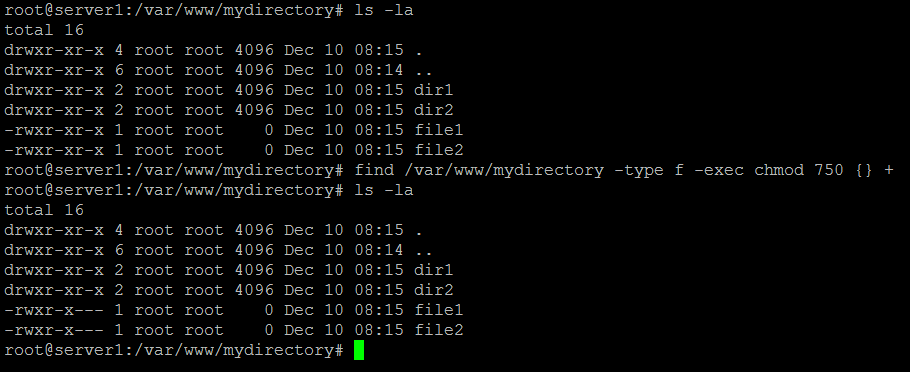
How To Chmod Files Only On Linux
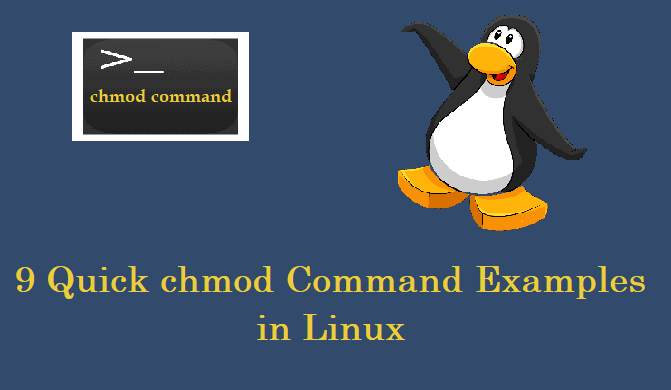
9 Quick Chmod Command Examples In Linux

How To Deny File Permissions To Everyone Except Yourself In Linux Linuxhostsupport

Linux Chmod Command Tutorial With Examples To Change Permission Of Files And Folders Poftut

Unix Permissions

How To Recursively Change The File S Permissions In Linux Linuxize
Q Tbn 3aand9gcq2oq90gyu7qjtwwppsiodhgqotjbz3awrstnhczkm6hwgdiahx Usqp Cau

How To Set Permission For Folders And Subfolders In Linux Poftut

Chapter 3 Folder Permissions
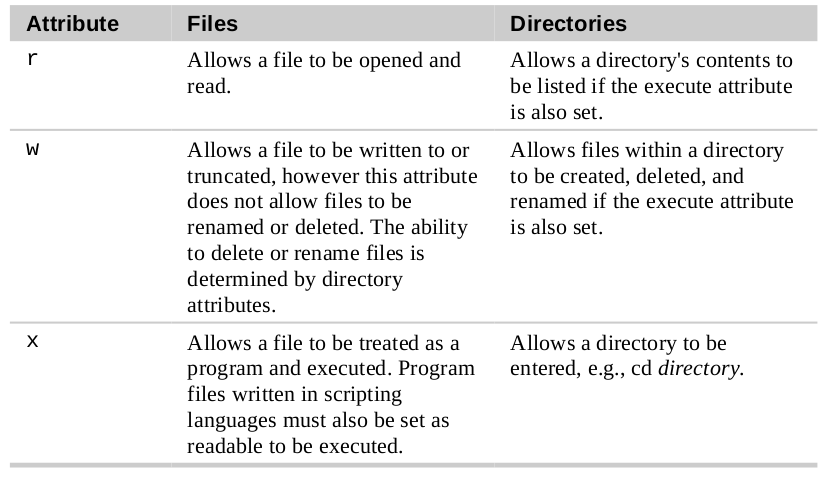
Chmod Wiki Ask Ubuntu

Chmod Command In Linux With Examples Geeksforgeeks

Linux File Permissions Tutorial How To View And Change Permission

Linux Permissions Guide Plex Support

How To Change File Permissions Recursively With Chmod In Linux

Linux Users And Groups Linode

Understanding File Permissions And Access Rights In Linux Linux Stall

Change Ownership And Rights To Files And Folders In Linux Smashing Lab

Chmod Chown Wsl Improvements Windows Command Line

A Quick Reference For Linux Commands One Page Linux Manual Linux Cheating Writing

Linux Permissions Guide Plex Support

Linux Unix Permissions And Attributes Linuxsecrets

Linux Chmod Command Help And Examples
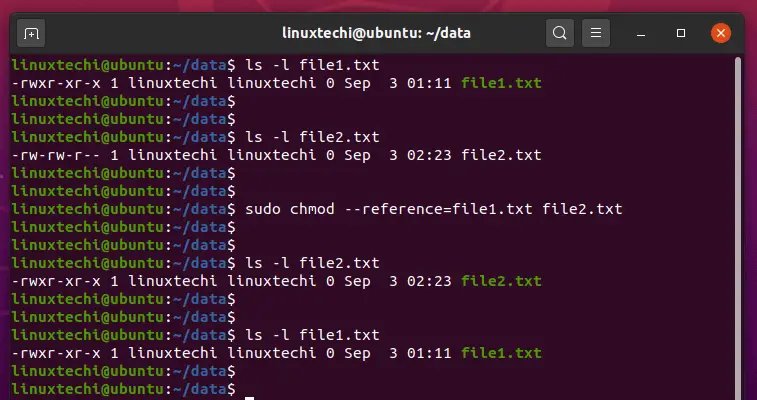
9 Quick Chmod Command Examples In Linux

An Introduction To Linux File Permissions Boolean World

Linux Permissions Deep Dive Part 1 By Runcy Oommen Medium
/GettyImages-1021092796-ea8c63ee76f84bd5bf98c4222337fbb4.jpg)
How To Use The Chmod Command In Linux

Linux Jessica Peng

Read Write Access Chmod 775
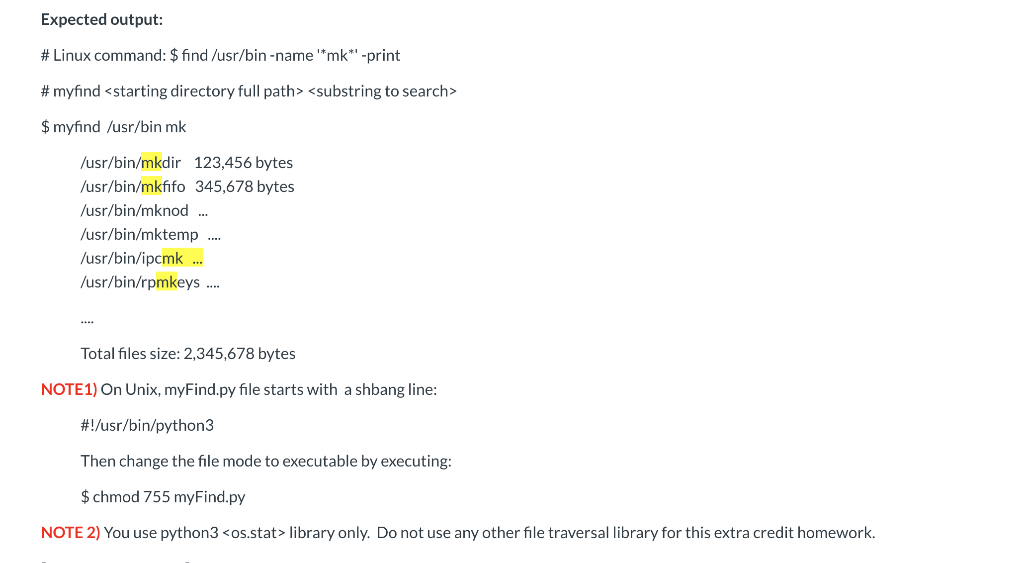
Write A Unix Linux Find Like Command Myfind In Chegg Com
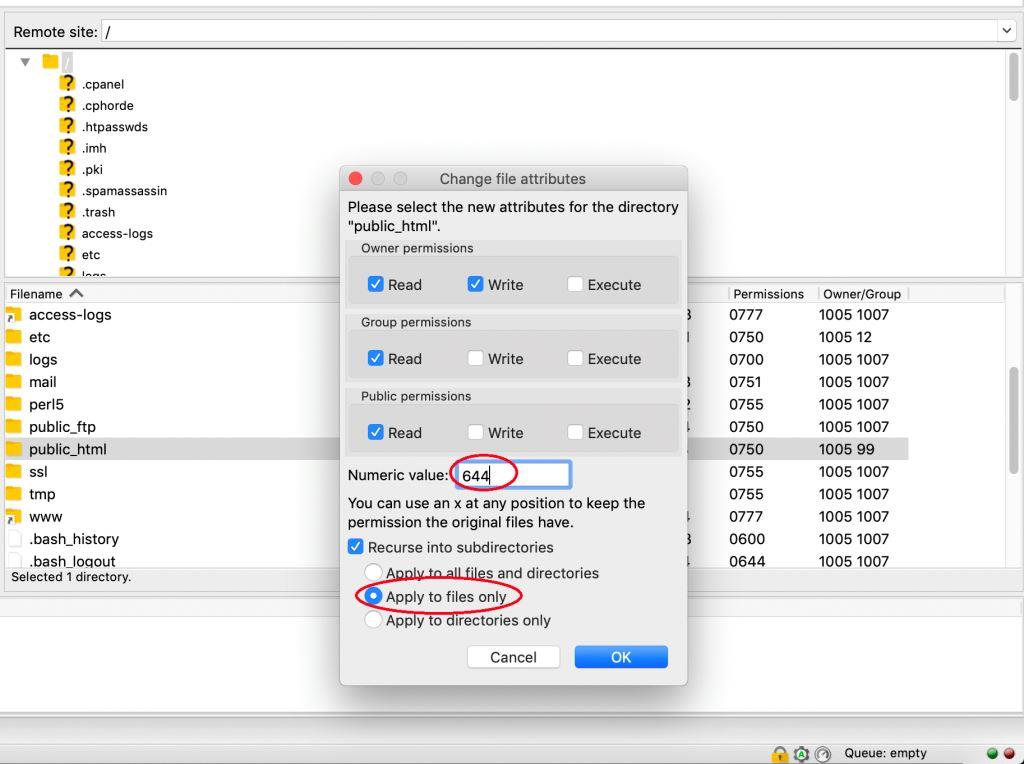
How To Assign The Correct Permissions To My Prestashop Files And Folders Rolige
.png)
File Permissions In Linux Unix With Example

Chmod Command In Linux With Examples Geeksforgeeks

File Permissions Rhel 7 Tutorial

Chmod Directory Read Write And Type
Q Tbn 3aand9gcsmtof5oge8os R2lzc9s8y8xkmcm3kyhtt M Kqujtci7flb3h Usqp Cau

Chmod How To Set File And Directory Permission In Linux Using Chmod Youtube

File Rights Management In Linux Programmer Sought

Command Line I Can T Change Mode For Some Directories Using Chmod Ask Ubuntu

Learning The Shell Lesson 9 Permissions

How To Copy File Permissions And Ownership To Another File In Linux

Project Ii Six Task Management System Linux File Permissions Programmer Sought

How To Use The Chmod Command On Linux
Sticky Bit In Linux

How To Change Directory Permissions In Linux Pluralsight

Csc128 Permissions And Links Chmod And Ls

Jijo K Jose Jijokjose Personal Website How To Change Permission To A Folder And All Of Its Subfolders In Linux Ubuntu Terminal Jijo K Jose

Linux Chmod Command Linuxfordevices
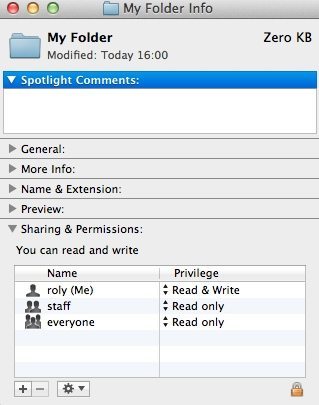
How To Change File Permissions Using The Terminal Chriswrites Com

How Do Linux File Permissions Work
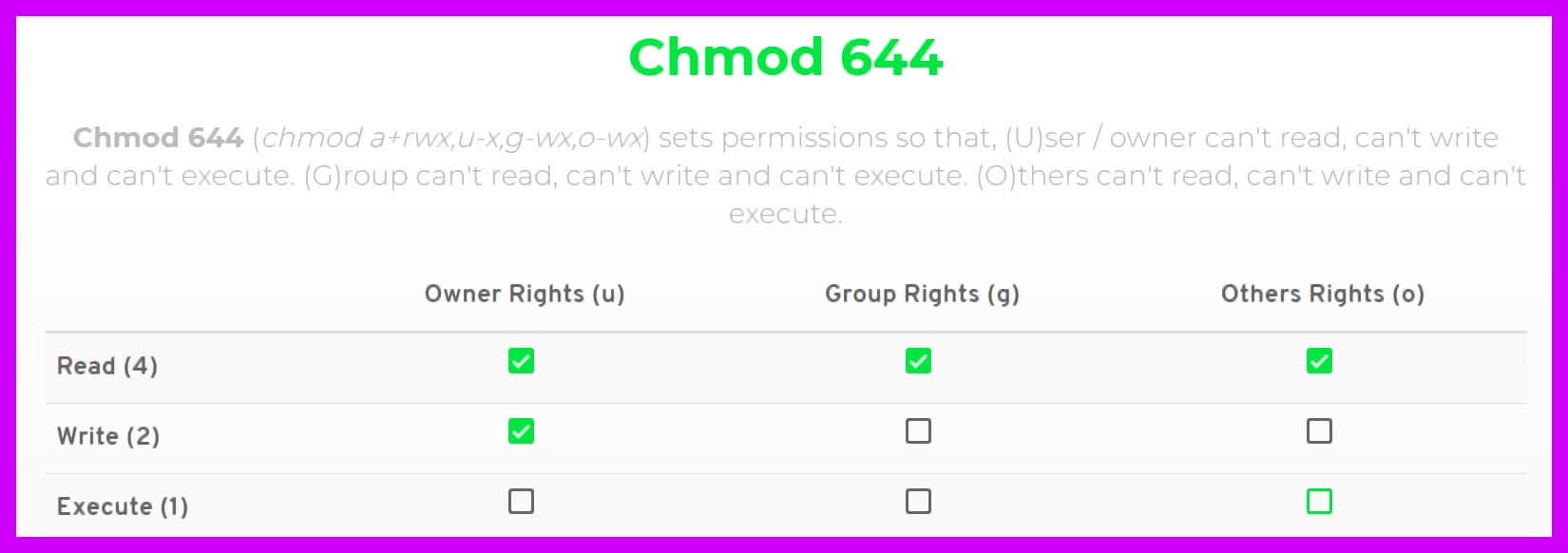
Chmod 777 A Definitive Guide To File Permissions

What Is Chmod How To Use Chmod For Wordpress File Permissions

Linux Chmod To Allow Read And Write Permissions For Directory Super User

How To Use Chmod And Chown Command Nixcraft

How To Set File Permissions In Mac Os X Macinstruct

Chmod Cheatsheet Linux

Linux Permissions Guide Plex Support

What Is Chmod 777 How To Change File Permissions For Linux Tech Ninja Pro

Execute Vs Read Bit How Do Directory Permissions In Linux Work Unix Linux Stack Exchange

Understanding Basic File Permissions And Ownership In Linux The Geek Diary

Chmod Calculator Chmod Generator Chmod Command
Why Would Using Chmod 777 Recursively From The Root Cause A Linux Box To Not Boot I Could Understand This If I Were Limiting Permissions But Why Would Adding Permissions Cause This
Q Tbn 3aand9gcs Trmaopb41lzfo2wl Mi6olorurkywaddbudhnw Ne1mor3ct Usqp Cau

How To Use Chmod And Chown Command In Linux
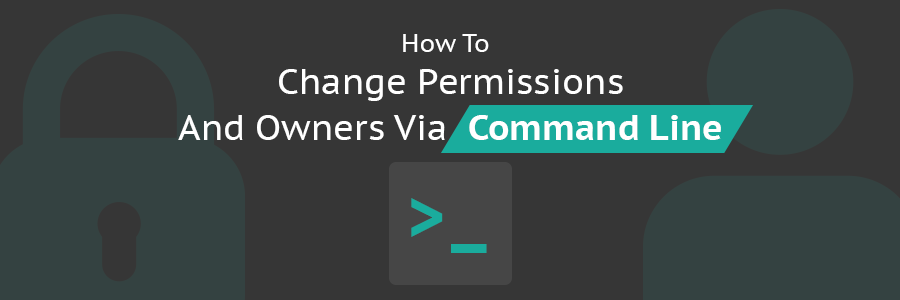
How To Change Permissions And Owners Via Linux Command Line

Chmod Recursive Change Permissions Recursively On Files Folders

Changing File Permissions Wordpress Org
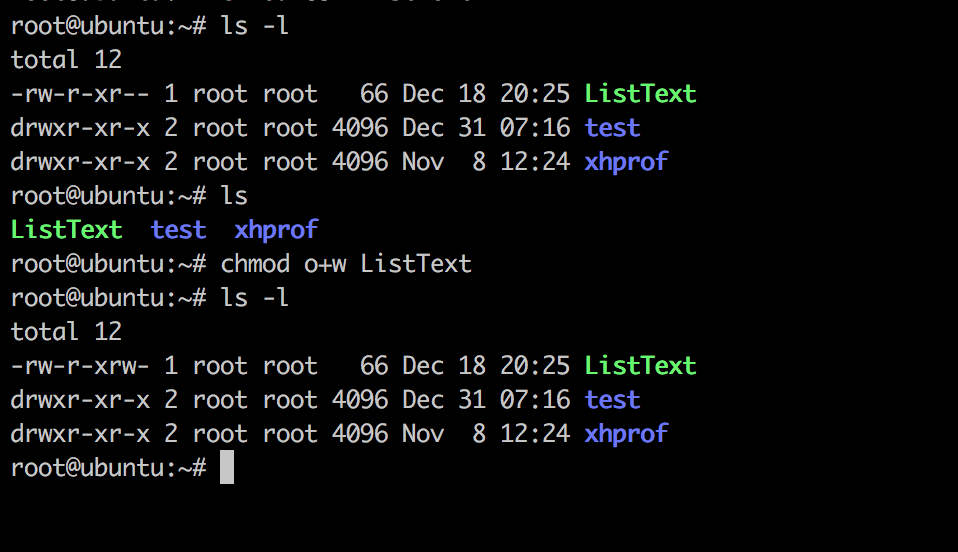
Linux Chmod Command Linuxfordevices

Chmod Recursive Change Permissions Recursively On Files Folders

Change File Permissions Recursively Linux Linux Hint

Permissions In Linux Geeksforgeeks

Understanding Linux Permissions And Chmod Usage

Advanced File Permissions In Linux

A Unix And Linux Permissions Primer Daniel Miessler

Linux File Permissions Complete Guide Devconnected
Linux Chmod Tips

14 04 Chmod Not Working In A Non Super User Ask Ubuntu
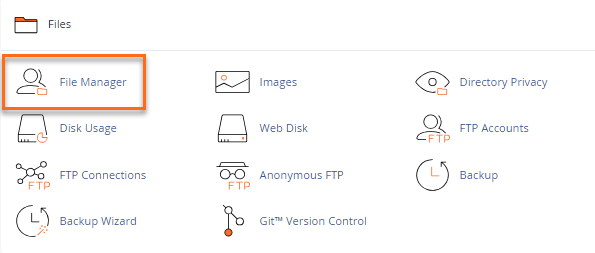
How To Change Permissions Chmod Of A File Hostgator Support

9 Quick Chmod Command Examples In Linux

Introduction To Linux File Permissions Attributes Chmod Globo Tech
Q Tbn 3aand9gct I9jvgnhaxowmpzpaajfkfizchmnvqt Bi Nz3ljrxwqpkb8l Usqp Cau

Linux Command Line Basics Part 4 I Have A Pc I Have A Pc

Chmod Recursive Change Permissions Recursively On Files Folders
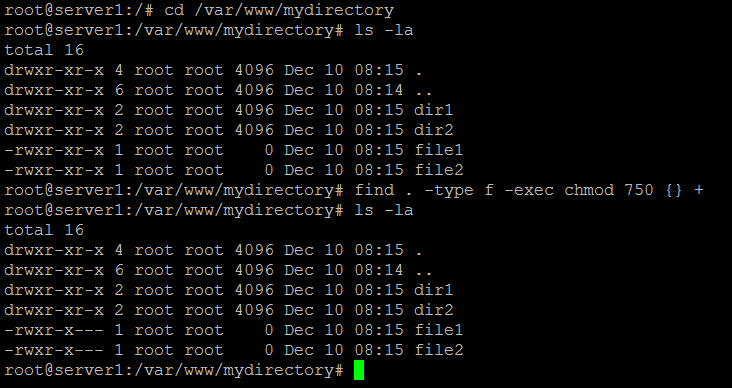
How To Chmod Files Only On Linux
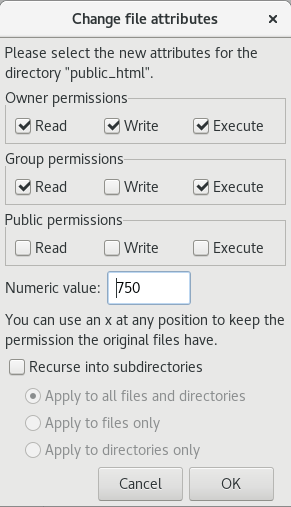
Change Permissions Of Files And Folders In Filezilla In Your Linux Hosting

Unix Tutorial Five

How To Change File Permissions Recursively With Chmod In Linux

Change Permission Of Mnt Directory Files Stack Overflow

Directories Showing Up In Green Executable Even After Removing Execute Permission For All Unix Linux Stack Exchange

Chmod Recursive Change Permissions Recursively On Files Folders
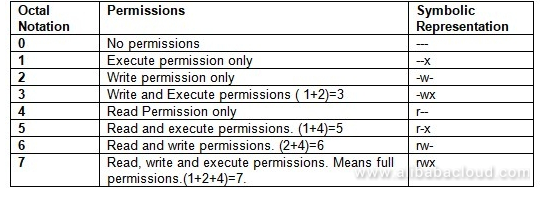
How To Use Linux File Permissions And Ownership On Alibaba Cloud Ecs Dzone Open Source




